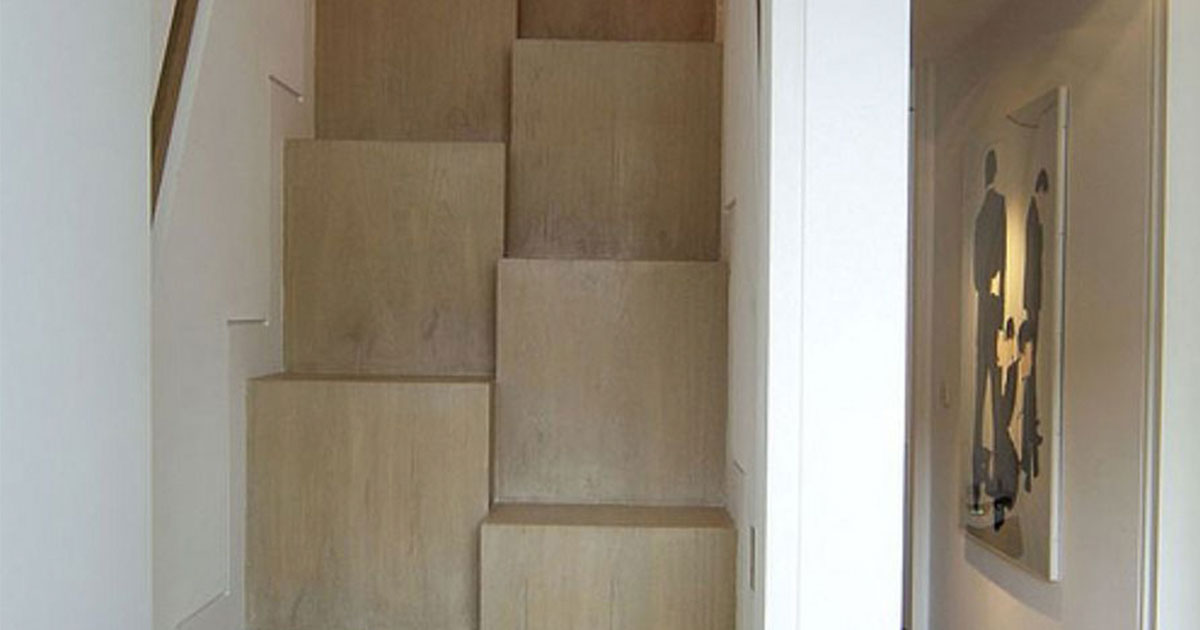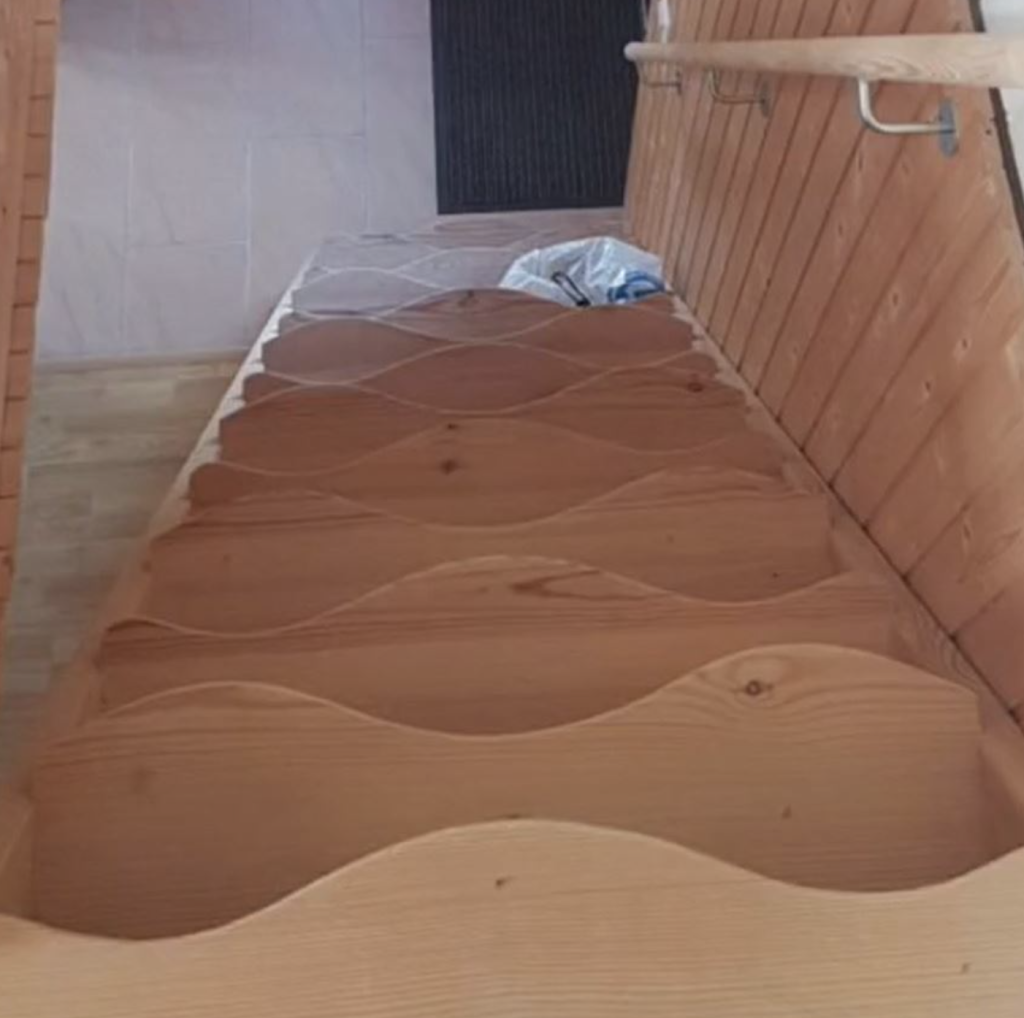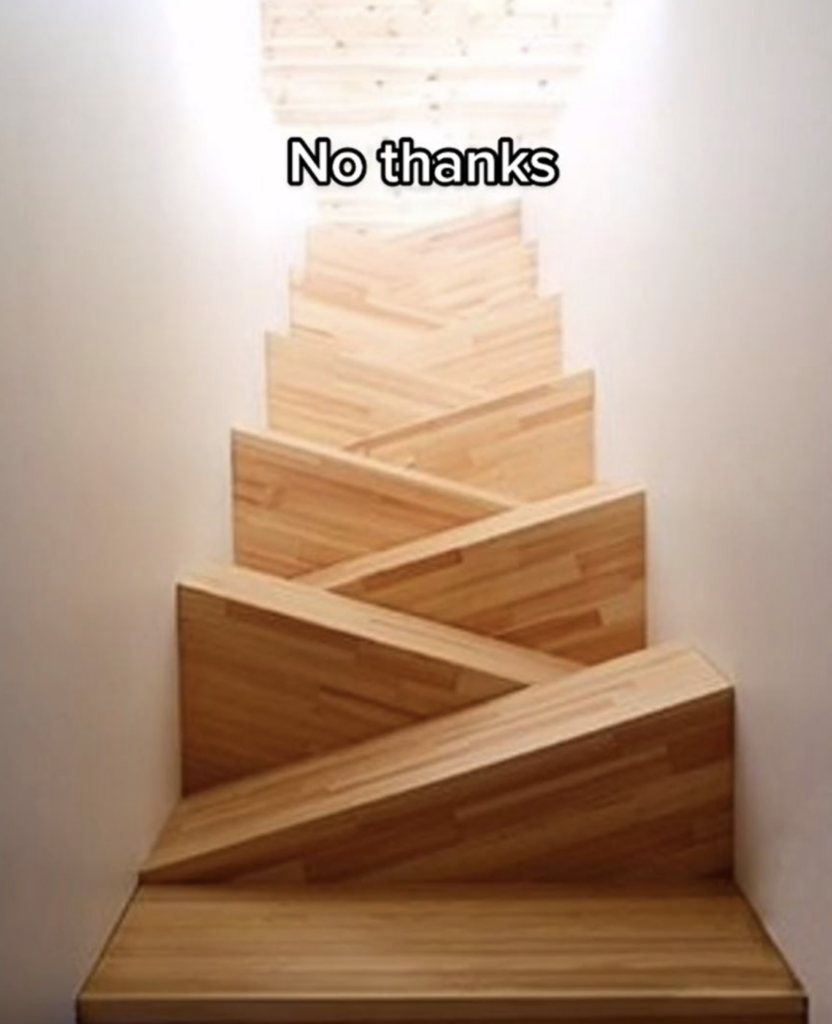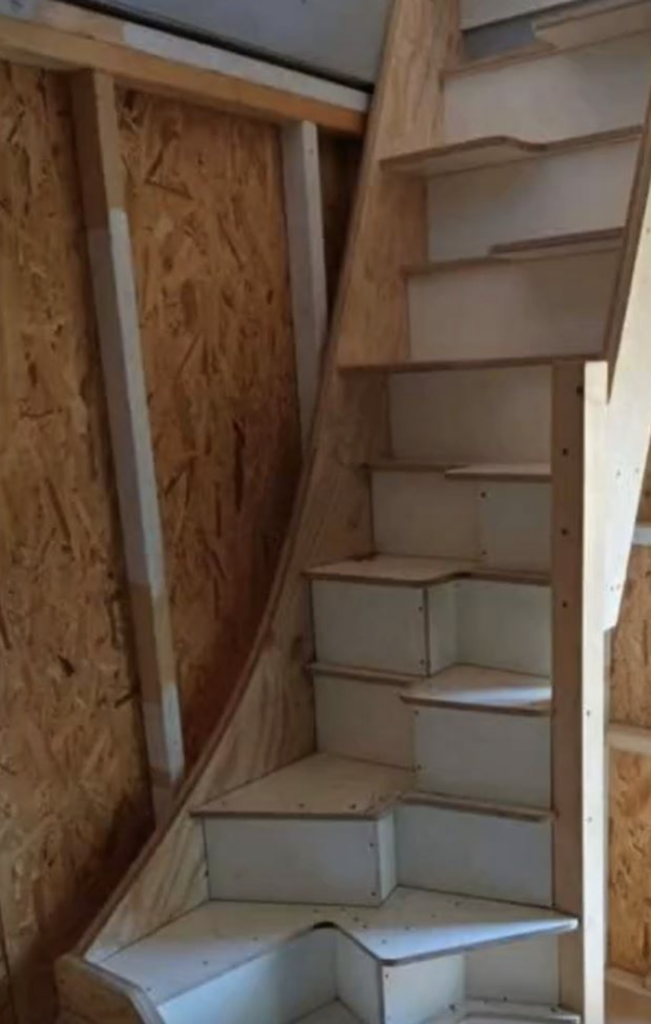
What Are Witches’ Stairs and Why Do They Even Exist?
A unique and fascinating architectural feature known as witches’ stairs gained popularity on TikTok a few years ago. Despite their spooky name, witches’ stairs actually have a practical purpose and are not related to superstition. In fact, when designed and installed properly, they can be both functional and aesthetically pleasing.

Witches’ Stairs: A Surprising Solution
Although not as thrilling as the superstitions associated with them, witches’ stairs are remarkably useful, especially in homes with limited space. You can often find them in attics, lofts, and tiny houses. Architects refer to them as “alternate tread stairs.”

How Witches’ Stairs Work
This design was created to save space in two ways. Firstly, each step is half as wide as traditional steps, and secondly, the steps are staggered. These elements work together to create a narrower staircase than those found in conventional homes. Despite their smaller size, these staircases can also provide additional storage for books or display precious items. As Scott Schuttner, the author of “Basic Stairbuilding,” explains, “the distance between treads on a given side of an alternating-tread stair is actually twice the unit rise, which gives you more free tread area and therefore a safer stair in theory.”
Contrary to popular belief, witches’ stairs meet building codes and safety standards in the United States. A standard staircase is three feet wide, whereas a residential witches’ staircase is typically between 27 and 30 inches wide.

The Origins of Witches’ Stairs
In 1985, an entrepreneur named J.M. Lapeyre patented a metal version of witches’ stairs. He envisioned this innovative stair alternative as a safe substitute for ladders in tight spaces, both in commercial and warehouse settings. Interestingly, this design is also utilized on commercial ships and oil rigs and is known as ship stairs or ship ladders, in addition to being called witches’ stairs or alternate tread stairs.
Debunking Misconceptions
When videos of witches’ stairs initially circulated on TikTok in 2021, an urban legend accompanied them. According to this legend, the staircases date back to the 17th century and were built into homes in Massachusetts to ward off witches during the Salem witch trials because “witches can’t climb up them.” However, this theory has been disproven. Another rumor suggests that Thomas Jefferson came up with the idea, hence the name “Jeffersonian” or “Jefferson stair.” Yet, an original design was documented in the book “Monckton’s One Plane Method of Hand Railing and Stair Building,” published in 1888.
In truth, there is no historical evidence to support the belief that witches’ stairs were designed to ward off witches. As Robin Briggs explains, the idea that these stairs disabled witches is “pure disinformation.” While some people who had these unique staircases also had other protective measures such as buried witch bottles or dead cats in the fabric, there is no connection between these practices and witches’ stairs. “The nearest belief was that if you put a broom over the door lintel, a witch who entered the room would be unable to leave it,” Briggs added.

Despite the lack of supernatural properties, witches’ stairs remain an interesting and decorative alternative to full-size staircases. They add a touch of uniqueness and quirkiness to any space.




Leave a Reply